The Cardboard Republic has rolled out the second annual Laurels of the Republic awards, celebrating the best new games released in 2016 for each of the gamer archetypes. What follows are the finalists for one of those groups.
 Whether it’s amassing the largest armies, hoarding the most gold, or building the best village, Architects are always on the lookout to expand their sphere of influence as much as possible. These world builders thrive on games where they feel the game has a point and that the best way to secure victory has more options than simply cracking skulls. Careful, methodical, and always looking to trade short term goals for long term opportunities, games of this nature reward strategy, persistence, and a sense of progression more than anything else.
Whether it’s amassing the largest armies, hoarding the most gold, or building the best village, Architects are always on the lookout to expand their sphere of influence as much as possible. These world builders thrive on games where they feel the game has a point and that the best way to secure victory has more options than simply cracking skulls. Careful, methodical, and always looking to trade short term goals for long term opportunities, games of this nature reward strategy, persistence, and a sense of progression more than anything else.
And with that, here are The 2016 Laurel Finalists for Architects:
Honorable Mention: Roll Player
Publisher: Thunderworks Games | Players: 1-4 | Play Time: 60 Minutes
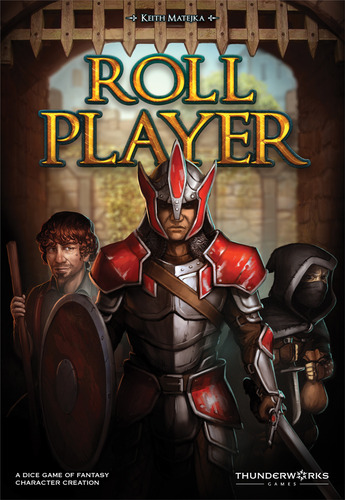 Many would think that narrowing down a year’s worth of praiseworthy games to 30 wouldn’t be that difficult to do. They would be wrong. That’s especially true in the case of Roll Player, which made it so close to being an Architect nominee for 2016. (As we’ll see, this year had some particularly robust competition). Nevertheless, Roll Player – aside from being one of our Indie Spotlight games – deserves recognition as an entertaining and enjoyable casual dice manipulation game.
Many would think that narrowing down a year’s worth of praiseworthy games to 30 wouldn’t be that difficult to do. They would be wrong. That’s especially true in the case of Roll Player, which made it so close to being an Architect nominee for 2016. (As we’ll see, this year had some particularly robust competition). Nevertheless, Roll Player – aside from being one of our Indie Spotlight games – deserves recognition as an entertaining and enjoyable casual dice manipulation game.
Anyone who has ever created a tabletop RPG character knows how much time and effort can go into crafting a persona. So many skills, traits, and character attributes hinge on the result of a handful of dice results. This process can be so challenging and time-consuming that many have remarked rolling up a character is practically a game unto itself.
Well, Roll Player is precisely that.
In this lightweight yet strategic dice placement title, players are trying to build their character in a way that yields the most points. Over a series of rounds, everyone takes turns claiming dice, procuring skills and weaponry, and adjusting their alignments, all in the hopes of improving their character to its fullest potential. One everyone’s character is completed, the points are tallied to see who is best equipped to leap off the table and into adventures beyond.
Roll Player makes the mere selection of a d6 every round reverberate with purpose. With short turns and laid back gameplay, Roll Player is admittedly on the lighter end of what Architects generally prefer, but the process of building up your character and trying to maximize the benefit from your selections proves to be both alluring and disarming to them all the same.
And it does so without having to commit to that whole ‘multi-year campaign’ nonsense.
The Nominees

Number Five: Imhotep
Publisher: Thames & Kosmos | Players: 2-4 | Play Time: 30-45 Minutes
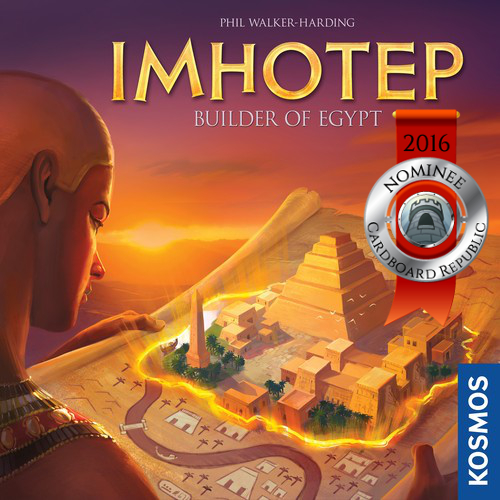 If you had to sum up Imhotep in a single word, it would be ‘construction’. Nearly every aspect of this Speil des Jahres runner up revolves around maneuvering and manipulating blocks to construct various desert locations among the Nile Valley.
If you had to sum up Imhotep in a single word, it would be ‘construction’. Nearly every aspect of this Speil des Jahres runner up revolves around maneuvering and manipulating blocks to construct various desert locations among the Nile Valley.
The trick is ensuring that the game’s sites use as many of your bricks as possible. (Plus, everyone knows your competitor uses inferior limestone.)
In this game, players are tasked with building several stone monuments in ancient Egypt. Over the course of a half dozen rounds, you compete to prove that you are the best engineer of the land. This is done by quarrying stones, ferrying them over on boats, and allocating them to different construction projects. The more blocks of your color you put at each location, be it a majestic pyramid, a stoic obelisk, or a solemn burial chamber, the more points you get.
Imhotep is a delightful lightweight building game with commendable components and an appealing visual landscape, as players’ blocks are literally stacked atop one another in a muted color mosaic in their quest for stone-laying supremacy. The game balances the tactile pleasure of moving around large cubes with a series of low-pressure strategic decisions to make, such as which ships to load your cargo or where to move a ship. With only six short rounds and tight scoring, the game is accessible and easy to learn – though it can also get a little cutthroat at times.
That’s proto-capitalism for you.
Yet despite its weight class and the act of fighting over shared territory, Imhotep is precisely the kind of lighter fare game Architects will enjoy. The game not only highlights and celebrates the act of construction itself, but it’s the sole path to victory, thereby falling right into this group’s wheelhouse.*
*Wheels not included
Number Four: Mystic Vale
Publisher: Alderac Entertainment Group | Players: 2-4 | Play Time: 45-60 Minutes
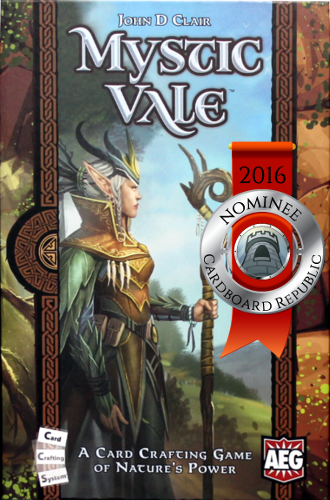 Inspiration comes in myriad ways from myriad sources. Whether deciphering the mysteries of the universe or exploring new design space in board games, the vision remains the same: to harness those creative mental energies and see where they lead. In the case of Mystic Vale, it was determining if you could create a game whose core mechanic could incorporate the use of card sleeves.
Inspiration comes in myriad ways from myriad sources. Whether deciphering the mysteries of the universe or exploring new design space in board games, the vision remains the same: to harness those creative mental energies and see where they lead. In the case of Mystic Vale, it was determining if you could create a game whose core mechanic could incorporate the use of card sleeves.
And here we are.
In Mystic Vale, an all-important mystical valley has been corrupted by a slow-spreading blight, and as druids, players are competing to see who is the best equipped to stem the tide of that corruption.
At first glance, Mystic Vale is set up like your standard Ascension-style deckbuilder, with several tiers randomly revealed cards for purchase. Unlike your typical deckbuilder, however, the number of cards in your deck never changes. Instead, your cards in Mystic Vale evolve over time thanks to the criminally-underused idea of transparent card overlays. These partial cards are what you’re acquiring most of the time.
Think Gloom, minus the whole Addams Family angle.
Rather than worrying about bloating your deck – or the need to cull it – players buy up portions of a card which are then slotted into the sleeves of any card played that turn. Thus, the further the game progresses, the more powerful those cards become, deftly conveying a theme of growth and expansion through quality over quantity.
Although also on the lighter end of the Architect spectrum, Mystic Vale effortlessly taps into this group’s deep-seated love of exploration and expansion in a way that’s both clever and enticing.
Considering Mystic Vale was created primarily to teach its unique card-building mechanic in anticipation of things to come, its level of success – both here and in general – is a true testament to its ingenuity.
Number Three: Star Trek: Ascendancy
Publisher: Gale Force Nine | Players: 3 | Play Time: 90-180 Minutes
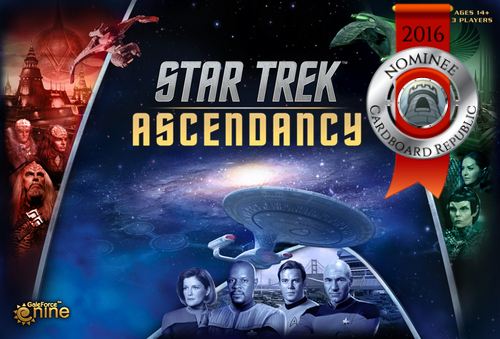 In concept, 4X games present an experience balanced along the four equal pillars of civ-building: eXploring, eXpanding, eXploiting, and eXterminating.
In concept, 4X games present an experience balanced along the four equal pillars of civ-building: eXploring, eXpanding, eXploiting, and eXterminating.
In reality, though, most 4X games focus primarily on the eXploit and eXterminate sides of the equation, where advancing technologies and visiting new lands is more a means to an end than viable path to victory. Within this series of popular and often lengthy games, so many titles have you seek out new worlds and new civilizations only so you can conquer them. Because of this, Architects are often torn on 4X games; they love the concept but the execution can be more conflict-driven than they prefer.
Star Trek Ascendancy blissfully deviates from that standard mold by placing extra emphasis on the whole ‘exploring the universe’ thing. Faithfully reflecting its source material, much of the game’s appeal overall – let alone this category – is how much it involves venturing into unknown star systems and the results that may bring.
It’s not that the game is devoid of fighting and conflict (that’s still in abundance too), but as any Trekkie knows, the enduring appeal of the Star Trek franchise is the idea that humanity has reached a point where the quest for discovery is our driving force forward and that combat is only out of necessity.
Well, minus that whole Dominion War thing…
In Star Trek Ascendancy, this is played out with both mechanical and thematic aplomb. Here, three players act as the great powers in the quadrant: the high-minded Federation, battle-loving Klingons, and manipulative Romulans. Will you negotiate with that new alien race, or will you pillage them?
With an exploration-friendly mantle and catering to their love of building things up more than tearing things down, Star Trek Ascendancy is exactly the kind of 4X game Architects will boldly go to.
Number Two: Scythe
Publisher: Stonemaier Games | Players: 2-4 | Play Time: 75-120 Minutes
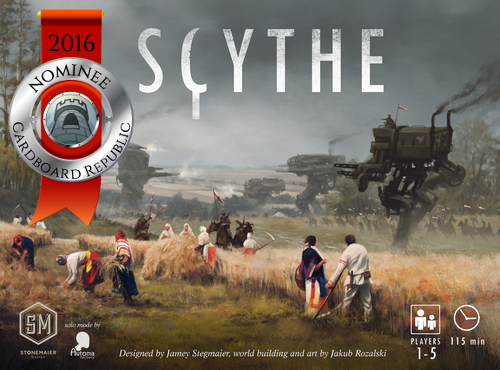 Scythe debuted on Kickstarter to thunderous applause and was deemed successful long before it ever hit most people’s tables. A large part of why amounts to a matter of perspective. Some looked at its minis and saw a game of area control & conquest. Others focused on the plethora of player board meeples and saw a game of resource-driven growth and building. Others still were drawn in by the masterful alternate universe landscape and saw an opportunity to explore a creative new world.
Scythe debuted on Kickstarter to thunderous applause and was deemed successful long before it ever hit most people’s tables. A large part of why amounts to a matter of perspective. Some looked at its minis and saw a game of area control & conquest. Others focused on the plethora of player board meeples and saw a game of resource-driven growth and building. Others still were drawn in by the masterful alternate universe landscape and saw an opportunity to explore a creative new world.
And in a way, they’re all right.
Scythe is a different game to different people, which is why upon it actually entering circulation the game garnered both high praise and moderate disappointment. It all depended on whether their expectations matched their experiences.
Clearly we side with the former.
Welcome to an alternate reality Central Europe, where mechanized war machines once fought alongside normal soldiers. While major conflict has ceased, competition over the last major factory has rekindled regional tension. Throughout the game, players gather and spend resources to increase their worker base, build mechs, construct buildings, and try to amass both power and popularity.
Yet though the minis are picturesque and the world ripe for further exploration, at the end of the day Scythe is a game about expanding your way to victory. Combat is present but not pervasive, and 7 of the 10 victory conditions focus on building, upgrading, or stockpiling something.
If that doesn’t scream Architects, we’re not sure what does. Scythe is a visually impressive game of agrarian aggressiveness, but control over whether you want that scythe to be a weapon or a tool is largely up to you.
Because of that, Scythe rightfully earns its spot on this list, and likely could have taken the gold if not for another set of impressive engines…
The Winner
2016 Architect Laurel – Terraforming Mars
Publisher: Stronghold Games | Players: 2-4 | Play Time: 75-120 Minutes
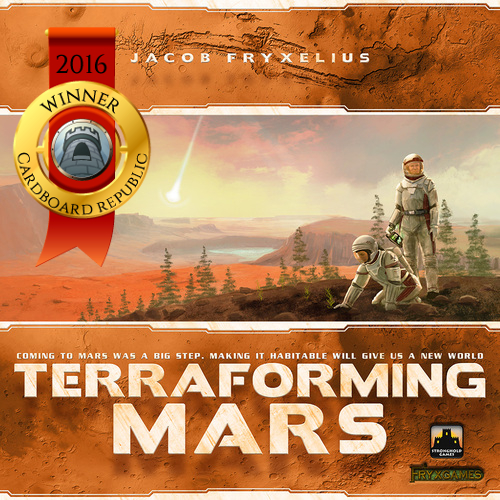 If you’ve followed closely over the last couple years, chances are you’ve heard us mention this title a few times. We noted our curiosity with it as a then-underreported game at Essen 2015, rejoiced when Stronghold Games signed it for US distribution, lamented how difficult it was to get a copy in the latter half of the year, and remarked how it was one of the most commonly seen games played at BGG Con 2016 despite it taking an average of two hours.
If you’ve followed closely over the last couple years, chances are you’ve heard us mention this title a few times. We noted our curiosity with it as a then-underreported game at Essen 2015, rejoiced when Stronghold Games signed it for US distribution, lamented how difficult it was to get a copy in the latter half of the year, and remarked how it was one of the most commonly seen games played at BGG Con 2016 despite it taking an average of two hours.
In short, Terraforming Mars has been on our radar for a long time. But with good reason.
While the aesthetics aren’t immediately eye-catching for some, be it its retro-looking boards or an eclectic spectrum of card art ranging from fictitious to stock photography, much like the surface of Mars itself, there is a trove of amazing gameplay potential just beneath an unassuming surface.
As the name implies, the goal is to transform Mars from a lifeless reddish rock to a…slightly less reddish rock capable of sustaining life. This is done by raising the temperature, oxygen, and water levels to habitable levels, and while everyone is working to make this happen, there’s no altruism here. As one of your standard futuristic sci-fi megacorps, each player is attempting over a series of rounds to establish themselves as the most successful company on the planet.
This is primarily accomplished through project cards. These provide players with a litany of potential paths to success – assuming you can muster the money and resources to pay for them. Maybe you’ll focus on mining steel. Or build lots of science stations. Or focus extensively on plants and animals. Any of these are possible through the strategic selection of which cards to add to your tableau, thereby giving Terraforming Mars both its addictive quality and massive degree of replayability. With heavy emphasis on player-driven card choices and copious engine-building possibilities, building and expanding your influence isn’t just encouraged – it’s necessary. And it’s only limited by the cards you draw.
This alone will make Architects, the consummate builders, keenly interested in this planet’s future. When you then go and factor in that your choices also have a direct hand in the formation of a new world, well, it really shouldn’t take a scientist to see why this title is well deserving of their Laurel this year.
![]()
Terraforming Mars Contest!
We thought about different ways to highlight how great the winning title of the Architect Laurel is. An extensive list of space and terrestrial-based ideas were suggested, rejected, filed, shredded, and ultimately launched into the sun for safe keeping. In the end, we opted for the most direct approach: providing one lucky winner with the opportunity to enjoy the award-winning game first hand. So let’s get to it!
That’s right! Enter below for your chance at your very own copy of Terraforming Mars!
![]()
Be sure to check out the 2016 Laurel Award pages for the other archetypes once they go live!







